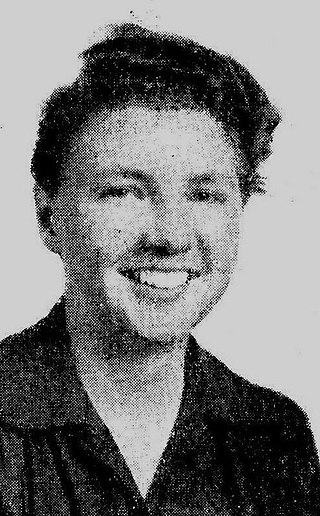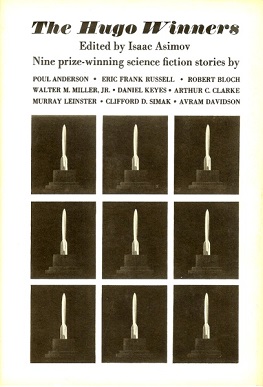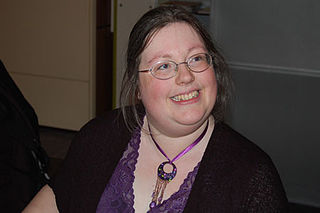
Brian Wilson Aldiss was an English writer, artist and anthology editor, best known for science fiction novels and short stories. His byline reads either Brian W. Aldiss or simply Brian Aldiss, except for occasional pseudonyms during the mid-1960s.

Human cannibalism is the act or practice of humans eating the flesh or internal organs of other human beings. A person who practices cannibalism is called a cannibal. The meaning of "cannibalism" has been extended into zoology to describe animals consuming parts of individuals of the same species as food.

Alice Bradley Sheldon was an American science fiction and fantasy author better known as James Tiptree Jr., a pen name she used from 1967 until her death. It was not publicly known until 1977 that James Tiptree Jr. was a woman. From 1974 to 1985 she also occasionally used the pen name Raccoona Sheldon. Tiptree was inducted into the Science Fiction Hall of Fame in 2012.

Patricia Oren Kearney Cadigan is a British-American science fiction author, whose work is most often identified with the cyberpunk movement. Her novels and short stories often explore the relationship between the human mind and technology. Her debut novel, Mindplayers, was nominated for the Philip K. Dick Award in 1988.

Leigh Douglass Brackett was an American science fiction writer known as "the Queen of Space Opera." She was also a screenwriter, known for The Big Sleep (1946), Rio Bravo (1959), and The Long Goodbye (1973). She worked on an early draft of The Empire Strikes Back (1980), elements of which remained in the film; she died before it went into production. In 1956, her book The Long Tomorrow made her the first woman ever shortlisted for the Hugo Award for Best Novel, and, along with C. L. Moore, one of the first two women ever nominated for a Hugo Award. In 2020, she posthumously won a Retro Hugo for her novel The Nemesis From Terra, originally published as Shadow Over Mars.

The Best of John Wyndham is a paperback collection of science fiction stories by John Wyndham, published after his death by Sphere Books, first in 1973. Michael Joseph Limited has published the book as a hardcover under the title The Man from Beyond and Other Stories in 1975. For the 1977 Sphere paperback edition it was split into two parts, both containing the full bibliography and the introduction by Leslie Flood.

A World Out of Time is a science fiction novel by Larry Niven and published in 1976. It is set outside the Known Space universe of many of Niven's stories, but is otherwise fairly representative of his 1970s hard science fiction novels. The main part of the novel was originally serialized in Galaxy magazine as "Children of the State"; another part was originally published as the short story "Rammer". A World Out of Time placed fifth in the annual Locus Poll in 1977.

"Call Me Joe" is a science fiction novelette by American writer Poul Anderson (1926–2001), first published in Astounding Science Fiction in April 1957. It has been frequently anthologized, including in The Science Fiction Hall of Fame, Volume Two (1973), a collection of unusually outstanding works selected by the Science Fiction Writers of America.

The Collected Short Fiction of C. J. Cherryh is a collection of science fiction and fantasy short stories, novelettes and novella written by American author C. J. Cherryh between 1977 and 2004. It was first published by DAW Books in 2004. This collection includes the contents of two previous Cherryh collections, Sunfall (1981) and Visible Light (1986), all of the stories from Glass and Amber (1987), stories originally published in other collections and magazines, and one story written specifically for this collection ("MasKs"). Cherryh's 1978 Hugo Award winning story, "Cassandra" is also included.

The Hugo Winners was a series of books which collected science fiction and fantasy stories that won a Hugo Award for Short Story, Novelette or Novella at the World Science Fiction Convention between 1955 and 1982. Each volume was edited by American writer Isaac Asimov, who wrote the introduction and a short essay about each author featured in the book. Through these essays, Asimov reveals personal anecdotes, which authors he's jealous of, and how other writers winning awards ahead of him made him angry. Additionally, he discusses his political beliefs, friendships, and his affinity for writers of "hard science fiction". The first two volumes were collected by Doubleday into a single book, which lacks a publishing date and ISBN.

Child cannibalism or fetal cannibalism is the act of eating a child or fetus. Children who are eaten or at risk of being eaten are a recurrent topic in myths, legends, and folktales from many parts of the world. False accusations of the murder and consumption of children were made repeatedly against minorities and groups considered suspicious, especially against Jews as part of blood libel accusations.
Cannibalism, the act of eating human flesh, is a recurring theme in popular culture, especially within the horror genre, and has been featured in a range of media that includes film, television, literature, music and video games. Cannibalism has been featured in various forms of media as far back as Greek mythology. The frequency of this theme has led to cannibal films becoming a notable subgenre of horror films. The subject has been portrayed in various different ways and is occasionally normalized. The act may also be used in media as a means of survival, an accidental misfortune, or an accompaniment to murder. Examples of prominent artists who have worked with the topic of cannibalism include William Shakespeare, Voltaire, Bret Easton Ellis, and Herschell Gordon Lewis.

Tansy Rayner Roberts is an Australian fantasy writer. Her short stories have been published in a variety of genre magazines, including Andromeda Spaceways Inflight Magazine and Aurealis. She also writes crime fiction as Livia Day.

The Left Hand of Darkness is a science fiction novel by the American writer Ursula K. Le Guin. Published in 1969, it became immensely popular, and established Le Guin's status as a major author of science fiction. The novel is set in the fictional Hainish universe as part of the Hainish Cycle, a series of novels and short stories by Le Guin, which she introduced in the 1964 short story "The Dowry of Angyar". It was fourth in sequence of writing among the Hainish novels, preceded by City of Illusions, and followed by The Word for World Is Forest.

"Memory", formerly A World Called Maanerek, is a science fiction novelette by American writer Poul Anderson, first published in the July 1957 issue of Galaxy Science Fiction magazine.

The Dark Between the Stars is a 1981 collection of previously-published science fiction short stories by American writer Poul Anderson.

The following is a list of works by science fiction and fantasy author Poul Anderson.
This is complete list of works by American science fiction and fantasy author Fred Saberhagen.

The Silent Invaders is a science fiction novel by American author Robert Silverberg, first published as a paperback Ace Double in 1963, which reissued it as a stand-alone volume in 1973; a Tor paperback appeared in 1985. The novel was expanded from a novelette which first appeared in Infinity Science Fiction in 1958.

















